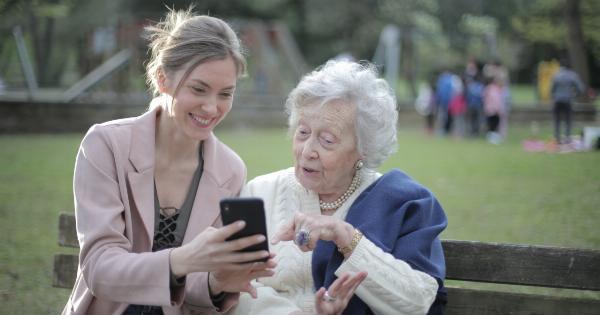Communication is a vital aspect of any relationship, and it becomes especially important in romantic partnerships.
However, sometimes we may find ourselves struggling to understand our partner’s needs and desires, leading to conflicts and misunderstandings.
Fortunately, there’s a concept known as “The 5 Languages of Love” that can help us understand and bridge this communication gap. Developed by Dr.
Gary Chapman, this theory proposes that individuals have different ways of expressing and receiving love. By discovering and speaking our partner’s primary love language, we can improve our connection and strengthen our bond.
The 5 Love Languages
In his book “The 5 Love Languages: The Secret to Love That Lasts,” Dr. Chapman introduces five primary ways in which people understand and communicate love:.
1. Words of Affirmation
For individuals with this love language, hearing words of encouragement, appreciation, and affirmation is crucial. Verbal compliments, kind and positive words, and recognition of their efforts make them feel valued and loved.
Conversely, negative or harsh words can deeply hurt them.
2. Acts of Service
Some individuals perceive love through actions rather than words. For them, actions like cooking a meal, doing household chores, or running errands show that their partner deeply cares for them.
These acts of service alleviate their stress and make them feel loved and supported.
3. Receiving Gifts
People who value receiving gifts as a love language appreciate the thought and effort behind presents. It’s not about materialism, but rather the significance of the gesture that speaks volumes to them.
Symbolic gifts represent love and affection, reminding them that they are cherished.
4. Quality Time
Quality time is vital for individuals whose love language centers around undivided attention and quality interactions.
Engaging in meaningful conversations, going on dates, or spending dedicated time together without distractions are ways to make them feel loved, seen, and valued.
5. Physical Touch
Physical touch plays a significant role in the love language of individuals who crave intimacy and connection through physical contact.
Holding hands, hugging, cuddling, kissing, or any other type of affectionate touch help them feel secure, loved, and emotionally connected.
Quiz: How to Find Your Love Language
If you’re wondering what your primary love language is, Dr. Chapman has created a simple quiz that can provide insights into how you perceive and express love. Take a moment to answer the following questions.
Question 1: What makes you feel most loved or appreciated by your partner?.
a) When they say kind and encouraging words
b) When they do something helpful for me
c) When they give me thoughtful gifts
d) When they spend quality time with me
e) When they express affection through physical touch.
Question 2: How do you typically express love to your partner?.
a) I often verbally express my love and appreciation
b) I frequently do things to help and support them
c) I enjoy surprising them with thoughtful gifts
d) I prioritize spending quality time with them
e) I frequently engage in physical affection and touch.
Question 3: What hurts or upsets you the most in your relationship?.
a) Negative or hurtful words
b) Lack of helpful actions
c) Thoughtless or forgotten special occasions
d) Distractions during shared moments together
e) Lack of physical intimacy and affection.
Question 4: How do you often communicate and show love to your partner?.
a) Through heartfelt notes, texts, or verbal praise
b) By assisting with tasks and chores
c) Through surprise presents or small tokens of affection
d) By actively listening and engaging in conversations
e) Through physical touch, hugs, and kisses.
Question 5: What gestures or actions from your partner make you feel most loved?.
a) Sweet compliments and encouraging words
b) When they take care of something without me asking
c) When they remember special occasions and give thoughtful gifts
d) When they make an effort to spend quality time with me
e) When they initiate or reciprocate physical affection.
Results:.
If you predominantly answered:.
a) Words of Affirmation – Your love language might be Words of Affirmation. Communicating love through verbal appreciation, compliments, and positive reinforcement is vital to you.
b) Acts of Service – Your love language might be Acts of Service. Actions speak louder than words for you; you feel loved when your partner helps and supports you through tangible actions.
c) Receiving Gifts – Your love language might be Receiving Gifts. Thoughtful and meaningful presents make you feel cherished and loved, as they represent the affection and care behind them.
d) Quality Time – Your love language might be Quality Time. Undivided attention, sincere conversation, and shared experiences are key to making you feel loved and connected.
e) Physical Touch – Your love language might be Physical Touch. Physical contact and affection, such as hugs, kisses, and hand-holding, make you feel secure, loved, and emotionally connected.
Speaking the Same Love Language
Discovering your partner’s primary love language can be a game-changer in your relationship. By understanding how they prefer to give and receive love, you can align your behaviors and communication to meet their needs effectively.
However, it’s essential to remember that everyone is unique, and they may have secondary love languages as well. Engaging in open and honest conversations about your love languages will enhance mutual understanding and strengthen emotional bonds.
Learning your partner’s love language is just the first step; the real transformation happens when you actively incorporate their love language into your daily interactions. Here are some tips for doing just that:.
1. Learn and Observe
Notice how your partner expresses love and pay attention to the actions and behaviors that make them feel most loved. Look for patterns and observe how they show love to others, too.
This understanding will guide your efforts to make them feel cherished and appreciated.
2. Adapt Your Communication Style
Once you know your partner’s love language, adjust the way you communicate your affection. Use words of affirmation, acts of service, gifts, quality time, or physical touch that resonate with them.
Tailor your expressions of love to their preferences to create a deeper connection.
3. Be Consistent
Consistency is key when speaking the same love language. Just like learning a new language, practice and repetition help solidify the connection.
Find ways to regularly incorporate your partner’s love language into your daily routine, ensuring that they consistently feel loved and appreciated.
4. Embrace Variety
While your partner may have a primary love language, it’s important to remember that secondary love languages also matter. Experiment with various ways of expressing love that align with their secondary preferences.
Don’t limit yourself to only one method; a combination of love languages can offer a well-rounded connection.
5. Prioritize Emotional Intelligence
Understanding and empathizing with your partner’s emotions is crucial for effective communication. Pay attention to their non-verbal cues and emotions, and respond accordingly.
Showing empathy and validating their feelings will create a safe and nurturing environment for your relationship to thrive.
Conclusion
Language barriers aren’t limited to spoken words; they exist in the realm of love as well. Discovering and speaking your partner’s primary love language opens the doors to deeper emotional connection and understanding.
By incorporating “The 5 Languages of Love” into your relationship, you can create a strong foundation rooted in love, appreciation, and fulfillment.






























